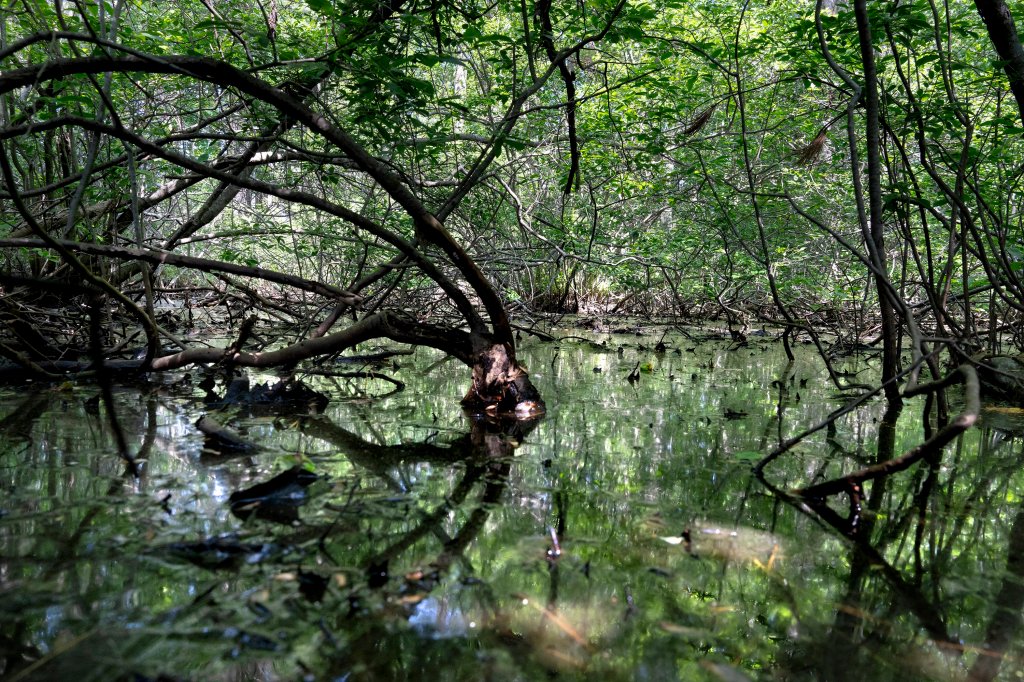
AUGUSTA — New proposed rules expanding protections for vernal pools and other at-risk wildlife habitat will move on to public hearings following a Thursday morning review by the Board of Environmental Protection.
The proposals from the Maine Department of Environmental Protection update the Natural Resources Protection Act and related permitting standards to reflect recently passed laws requiring DEP to strengthen safeguards for vernal pools and protecting habitats of endangered and threatened species, such as peregrine falcons and spotted turtles.
The board agreed to send the proposals to public hearing as updates to two separate chapters of state regulation. The hearings have yet to be scheduled.
Vernal pools are small, seasonal wetlands that provide crucial spring breeding grounds for amphibians and invertebrates. The pools play a sizable role in sustaining ecosystems by providing food to a variety of wildlife while slowing and filtering spring runoff. Tucked at the edges of forests and fields, they are also easily overlooked, drying up in the summer.
“Vernal pools are small, but the role they play in our environment is huge,” Francesca Gundrum, Maine Audubon’s advocacy director, said in June. “New federal wetland rules leave most without any protections. Climate change and development are threatening them, too. They need this extra protection.”
The new standards include the prohibition of disturbances within 100 feet of vernal pools where practicable and protections across property boundaries rather than limiting them to a single parcel.
The cutoff date for determining whether a pool is considered significant would also be moved two weeks earlier in the spring, which will close a loophole determining the boundaries of a pool, which is often baked into development plans. It better matches when frogs and salamanders actually arrive to breed, officials said in June.
“Of course migrating wildlife are blind to property lines,” Philip DeMaynadier, a Maine Department of Inland Fisheries and Wildlife, told legislators in May. “To our knowledge, there is no other protected natural resources in Maine where setbacks and other regulatory standards end at a property boundary.”
Due to the limits of small lot sizes, though, single residential lots that are not a part of a larger housing development would have exemptions from some of the new restrictions.
The second piece of the proposal would, for the first time, fold habitat for state-listed endangered and threatened species into the state’s definition of “significant wildlife habitat.” The designation will apply only where habitats overlap with already protected natural resources or when a development project already requires state permitting.
State officials said the intent is to add protections without creating new layers of regulation.
Wildlife officials said the change is meant to protect the specialized areas that rare species depend on for survival, such as nesting cliffs for peregrine falcons and breeding ponds for spotted turtles. Small disturbances in these habitats can break up populations or make population rebounds more difficult for species at risk.
The Department of Inland Fisheries and Wildlife is creating publicly available maps showing where the rules will apply. The first maps identifying habitat for peregrine falcons, spotted turtles, the ringed bog haunter dragonfly and Hessel’s hairstreak butterfly are expected to be finalized this fall.
Maps for some 21 additional species will be added in the coming months and years, officials said, with the department focusing on those most at risk from development.
In addition to new protections, draft rules also broaden who can apply for certain streamlined permits. Federally recognized tribes would be allowed to seek “permits by rule” for projects like habitat restoration or the construction of public boat ramps, which is a process limited to state agencies and municipalities.
The rules would give authority to DEP, under some strict conditions, for allowing heavy equipment to operate in rivers and wetlands during restoration projects. New rules would also update erosion and sediment control standards to match current best practices.
DEP has said the package of changes is intended to strengthen habitat protections while minimizing burdens from regulations.
